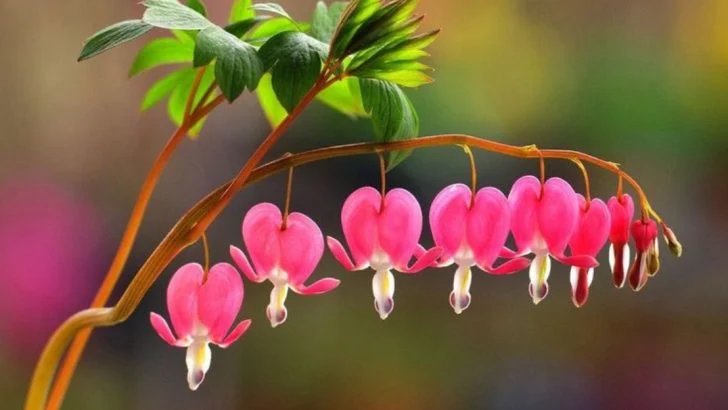Forest gardens, with their dappled light and rich, organic soil, offer a unique opportunity to grow lush, shade-loving blooms that might struggle elsewhere. While many flowering plants crave the sun, there’s a diverse and dazzling group of blossoms that actually prefer the cool embrace of shade, thriving under tree canopies and along woodland paths.
From the elegant bleeding heart to the whimsical toad lily, and the classic charm of columbine and astilbe, these flowers bring color, texture, and seasonal interest to forested spaces. Many are also pollinator-friendly, attracting bees, butterflies, and hummingbirds to your garden’s shady corners.
Discover these 17 enchanting shade-loving flowers that are perfect for forest gardens, and transform your wooded landscape into a blooming, tranquil retreat.
Bleeding Heart
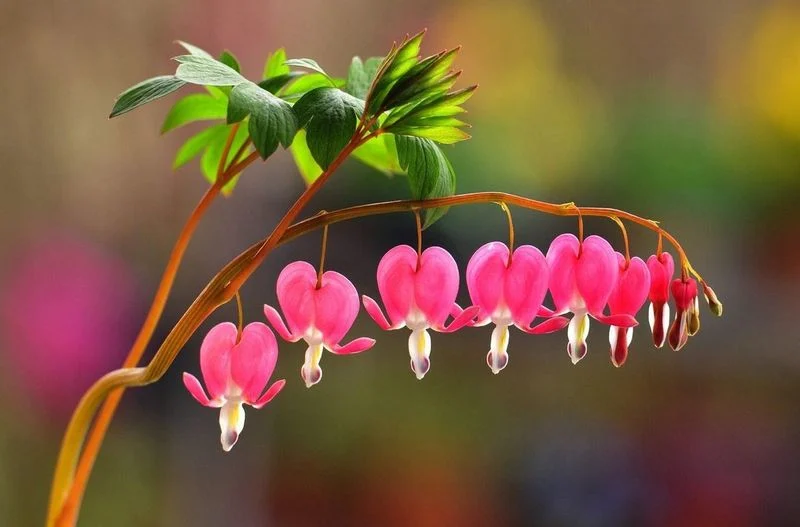
With its heart-shaped pink and white blooms, the Bleeding Heart is a romantic addition to any shaded garden. These whimsical flowers dangle gracefully along arching stems, creating a curtain of love in the dimmer corners of your landscape. Their unique shape draws the eye and invites curiosity.
Native to Asia, these perennials are a gardener’s delight in spring. They thrive in well-drained, moist soil and can be paired beautifully with ferns and hostas. Perfect for adding a touch of elegance, Bleeding Hearts are a testament to nature’s artistry.
Hosta
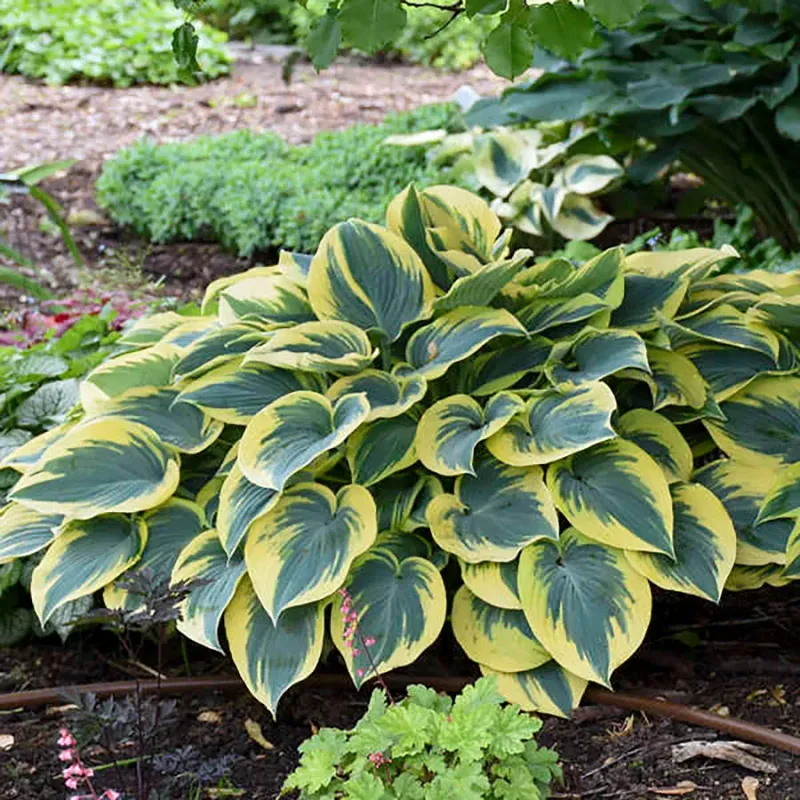
Hostas, with their lush foliage, are quintessential shade plants. Their broad leaves come in a spectrum of greens and blues, offering a cooling presence in warm months. They are versatile and easy to grow, making them ideal for beginners and experts alike.
These perennials are not just for ground cover; they create stunning visual interest when layered with other plants. Resistant to pests, Hostas serve as the perfect backdrop for bold flowers. Whether in pots or beds, their texture adds depth and beauty to shaded gardens.
Astilbe
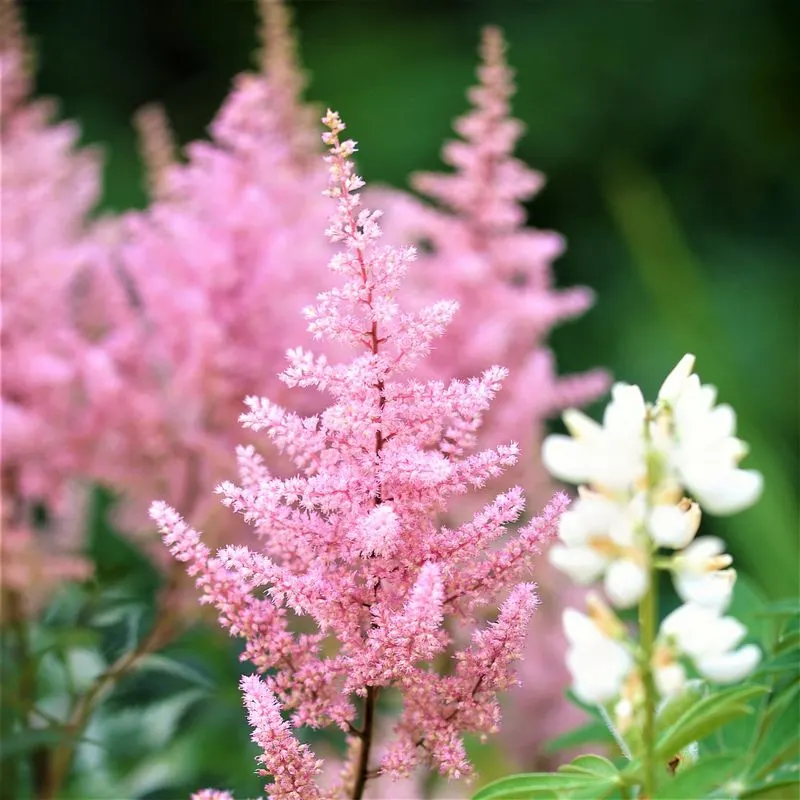
Astilbe is a shade garden’s crown jewel, with feathery plumes that add height and drama. Their blooms range from soft pastels to vibrant pinks, making them a versatile choice for gardeners seeking color.
This perennial is hardy and requires minimal care, thriving in moist, rich soil. Astilbe’s fern-like foliage provides texture even when not in bloom, ensuring year-round interest. Perfect for borders or as a focal point, these plants shine in dappled light, attracting butterflies and admiration alike.
Foxglove
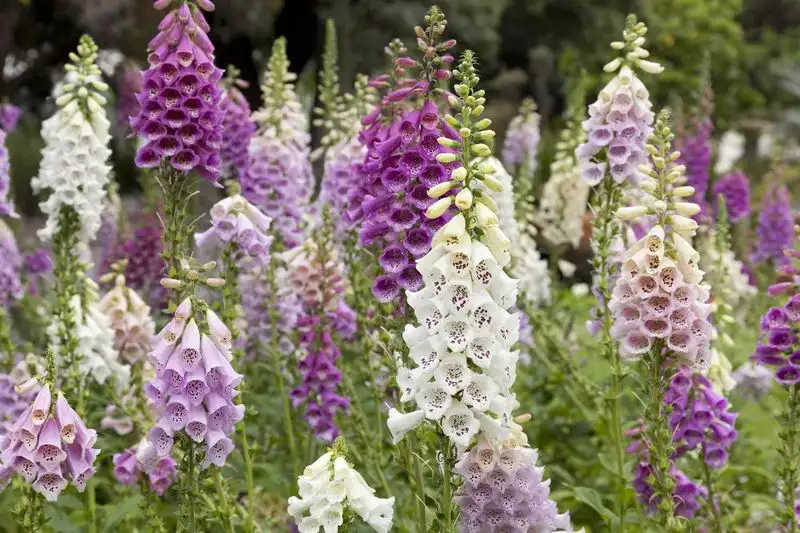
Foxgloves stand tall and proud, bringing a touch of fairy-tale magic to shaded gardens. Their bell-shaped flowers, often spotted, sway gracefully in the breeze, adding vertical interest and charm.
These biennials are easy to grow and can reach impressive heights, making them ideal for the back of borders. They thrive in fertile, well-drained soil and are beloved by pollinators. Foxgloves’ enchanting appearance makes them a favorite for those who wish to create an ethereal garden escape.
Japanese Anemone
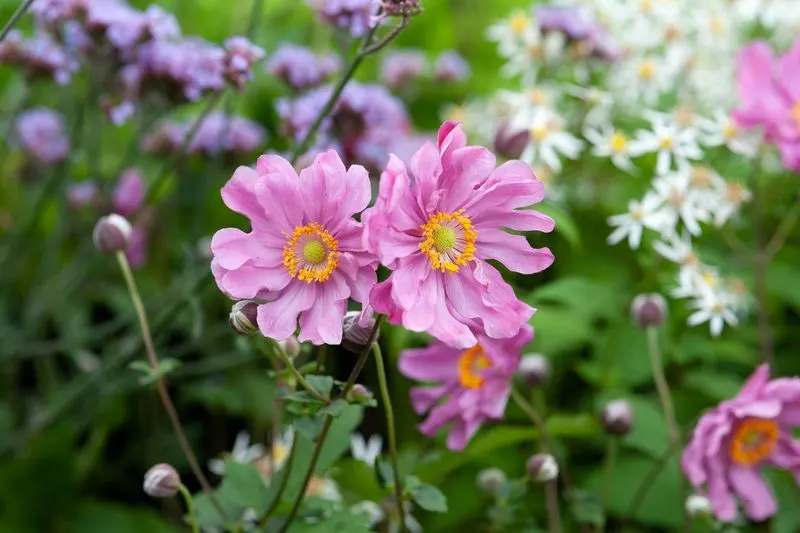
Japanese Anemones bring elegance with their simple yet striking flowers. Blooming in late summer to fall, their white and pink petals seem to dance on slender stems, catching the slightest breeze.
These perennials are robust, preferring moist, well-drained soil. They are perfect for adding late-season color and pair well with other shade plants like ferns and hostas. Their ability to naturalize makes them a low-maintenance choice for expansive garden beds.
Lungwort
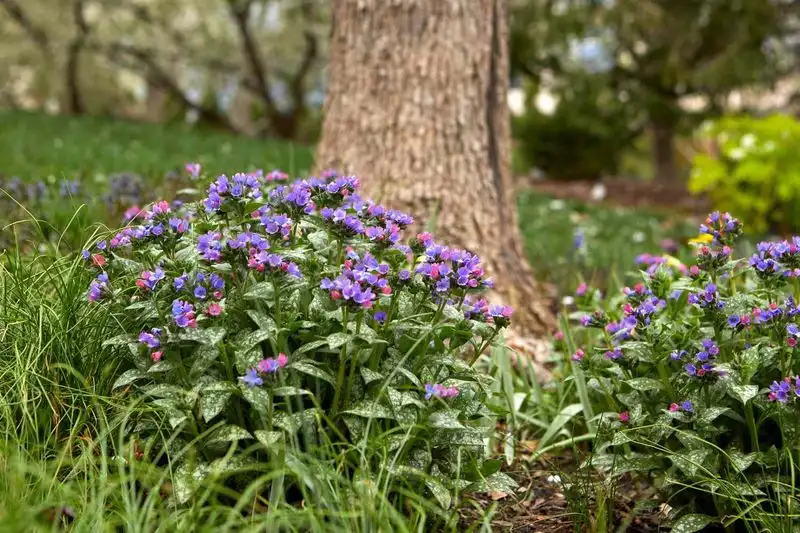
Lungwort is a charming addition to any shade garden, celebrated for its unique foliage and flowers. The speckled leaves provide interest year-round, while clusters of blue and pink flowers bloom in spring.
This resilient plant thrives in partial to full shade and prefers moist, well-drained soil. Lungwort’s low-growing habit makes it an excellent ground cover option, and it pairs beautifully with other woodland plants. Its intriguing leaf patterns and vibrant blossoms are sure to captivate.
Coral Bells
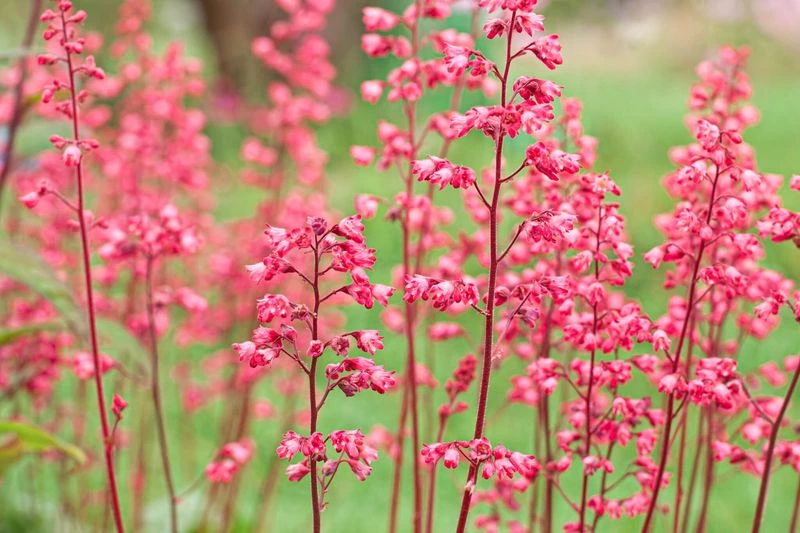
Coral Bells are prized for their colorful foliage, which ranges from deep purples to bright oranges. Their leaves provide a kaleidoscope of color even when not in bloom, adding vibrancy to shaded areas.
These perennials are easy to care for and do well in containers or garden beds. Their delicate flower spikes attract pollinators and add vertical interest. Coral Bells are perfect for borders or as a standout plant in a shade garden, offering texture and color that lasts across seasons.
Primrose
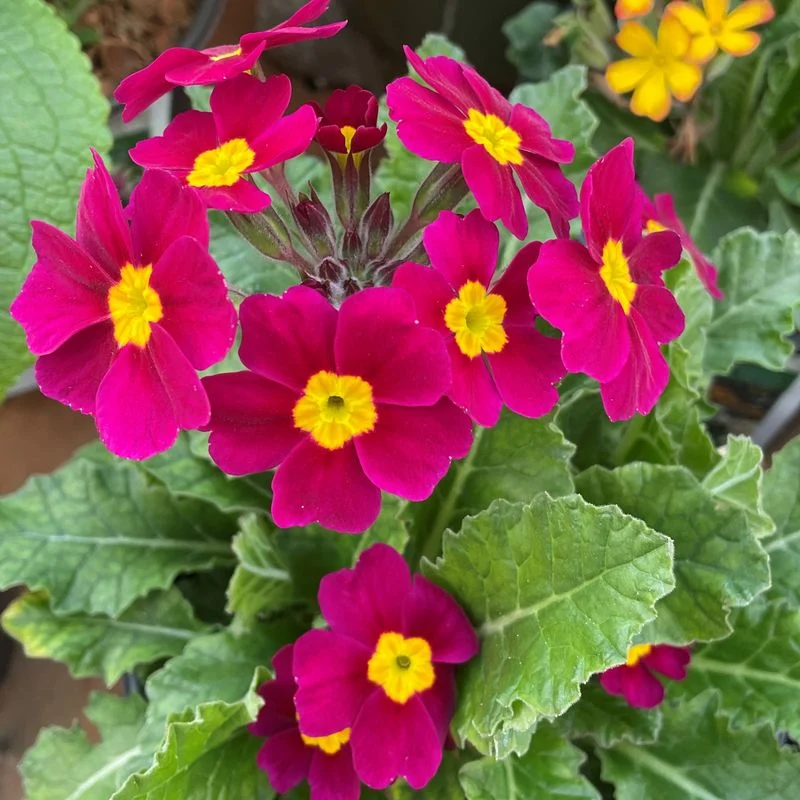
Primroses are a cheerful addition to spring gardens, with flowers that come in a rainbow of colors. These perennials bloom early, signaling the start of the season with their vivid yellows, pinks, and purples.
They thrive in cool, shaded environments and prefer moist soil. Primroses are perfect for edging paths or filling in gaps between larger plants. Their bright blooms are not only visually appealing but also attract early pollinators, supporting your garden’s biodiversity.
Trillium
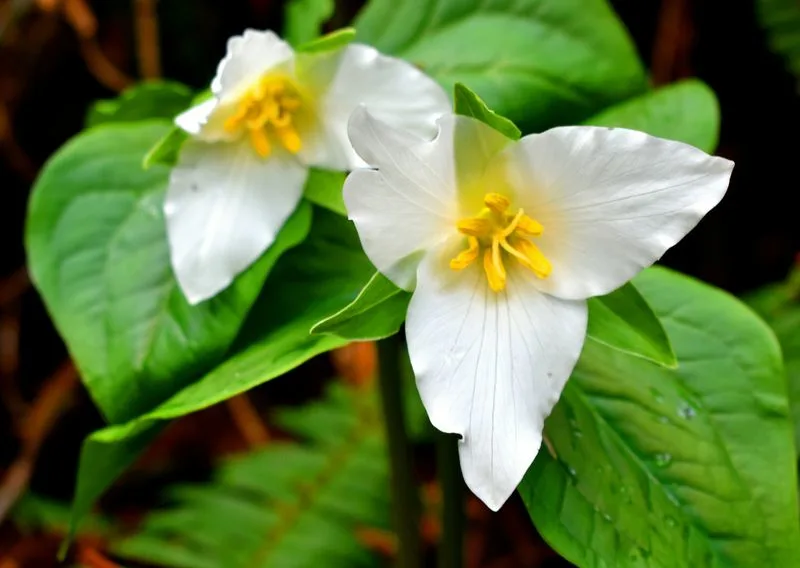
Trillium, with its distinctive three-petal flowers, is a graceful woodland plant. Blooming in spring, these flowers are often white or pink and make a subtle yet striking statement in shaded gardens.
These perennials are native to North America and thrive in rich, moist soil. Trillium’s understated beauty makes it a favorite among gardeners looking to create a naturalistic landscape. It’s an ideal choice for forest gardens, complementing ferns and other native plants.
Toad Lily
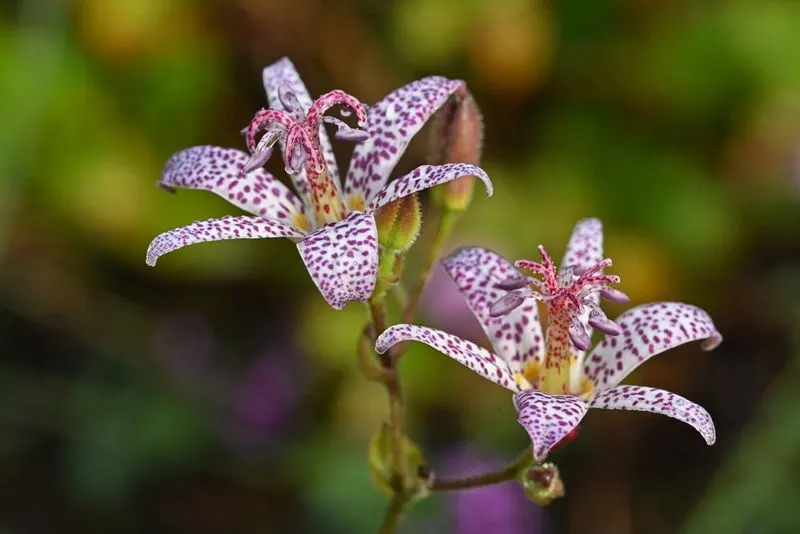
Toad Lilies are as whimsical as their name suggests, with speckled flowers that bring a touch of exotic beauty to the shade garden. These blooms appear in late summer to fall, offering interest when many other plants have faded.
They thrive in part to full shade and prefer moist, well-drained soil. Toad Lilies are perfect for adding intrigue to borders and are a conversation starter with their unusual appearance. Their resilience and long-lasting blooms make them a valuable addition to any garden.
Hellebore
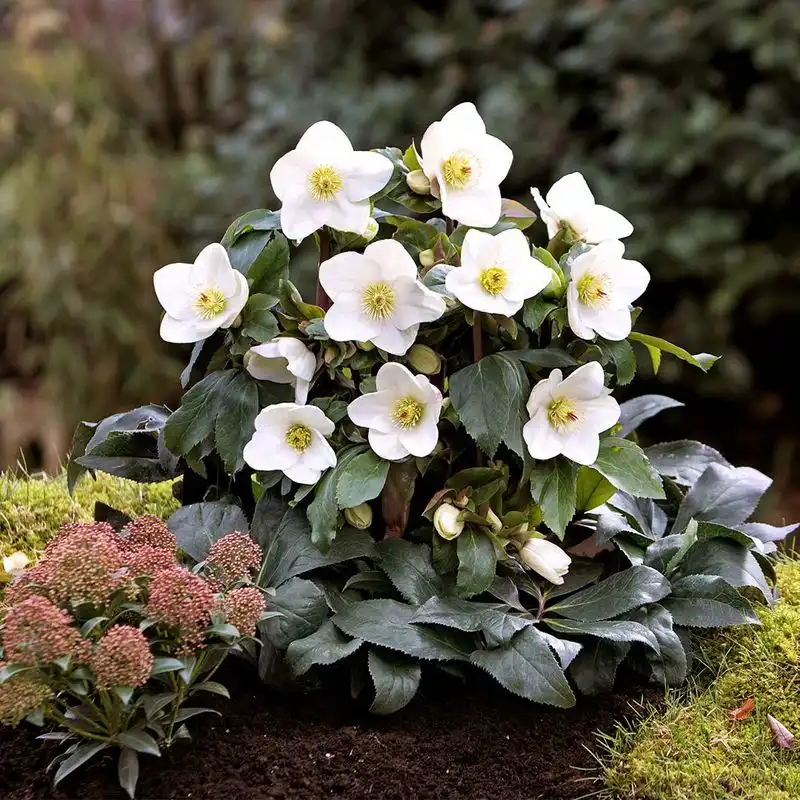
Hellebores, often referred to as Lenten Roses, bloom when most plants are dormant, gracing gardens with their presence in late winter to early spring. Their muted tones of pink, green, and burgundy add sophistication.
These perennials thrive in shaded areas with well-drained soil. Hellebores are long-lived and require minimal maintenance, making them a favorite for seasoned gardeners. Their evergreen foliage provides year-round interest, while their winter blooms offer a glimpse of spring to come.
Solomon’s Seal
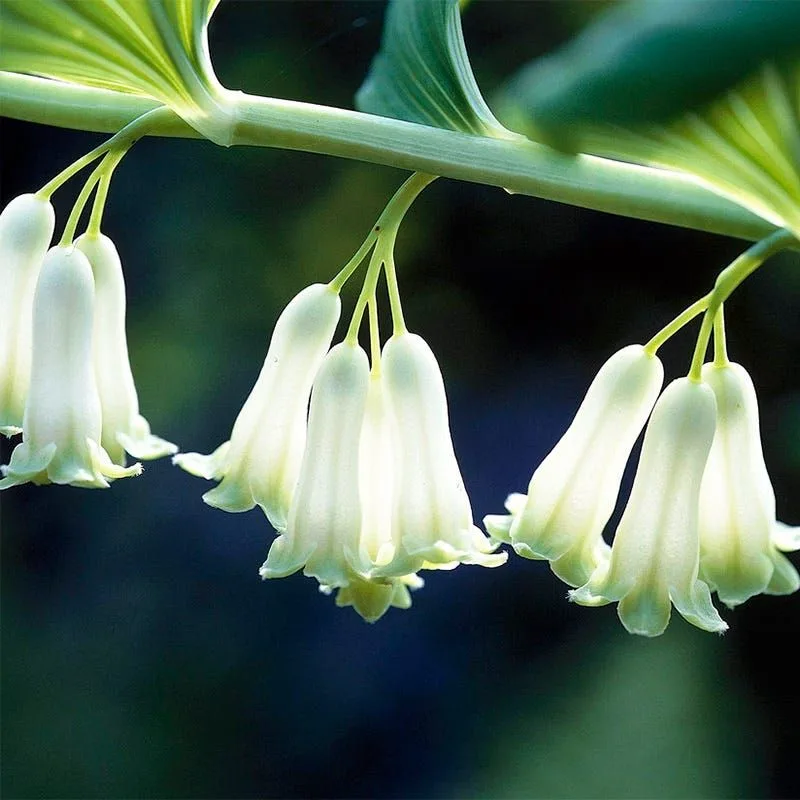
Solomon’s Seal is known for its graceful arching stems and dangling white flowers. This perennial adds architectural interest and is perfect for shady spots where its elegant form can be admired.
It thrives in well-drained, rich soil and can spread over time, forming a naturalized appearance. Solomon’s Seal pairs beautifully with ferns and other woodland plants, creating a harmonious garden setting. Its understated elegance makes it a timeless choice for shade gardens.
Brunnera

Brunnera, often known as Siberian Bugloss, charms with its heart-shaped leaves and tiny blue flowers that resemble forget-me-nots. These blooms appear in spring, adding a delicate touch to the shade garden.
This perennial thrives in moist, well-drained soil and prefers partial to full shade. Brunnera’s foliage is equally captivating, with its silvery sheen adding brightness to dark corners. Ideal for borders or as a ground cover, Brunnera offers beauty and texture throughout the growing season.
Foamflower

Foamflower, named for its frothy white blooms, brings a light, airy quality to shaded areas. These flowers appear in spring, creating a soft, romantic vibe in the garden.
This perennial is easy to care for, thriving in moist, well-drained soil with partial to full shade. Foamflower’s heart-shaped leaves add interest even when not in bloom, and its spreading nature makes it an excellent ground cover choice. Perfect for woodland gardens, it pairs wonderfully with ferns and other shade lovers.
Jacob’s Ladder
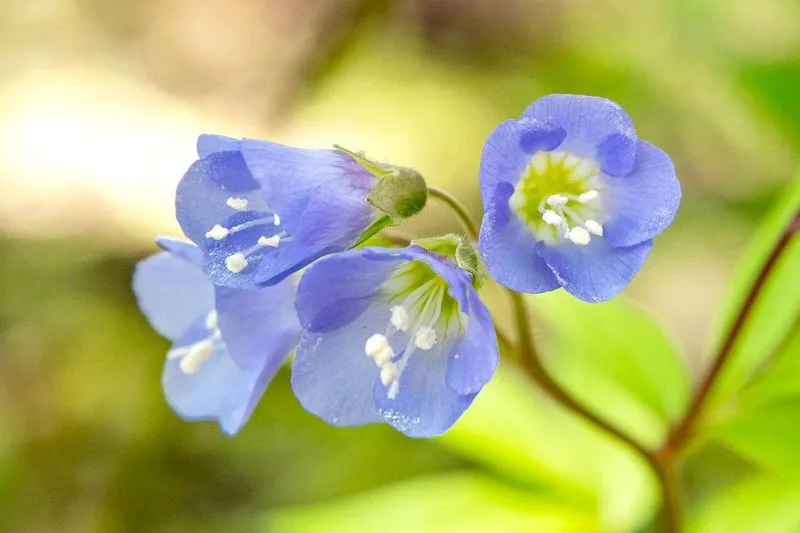
Jacob’s Ladder is a unique plant known for its ladder-like leaf arrangement and clusters of blue flowers. These blooms add a splash of color in spring, brightening shaded corners with ease.
Thriving in cool, moist environments, this perennial is perfect for woodland gardens. Jacob’s Ladder’s delicate foliage adds texture, while its flowers attract pollinators. Easy to grow, it’s a great choice for gardeners looking to add visual interest without sacrificing ease of care.
Lady’s Mantle
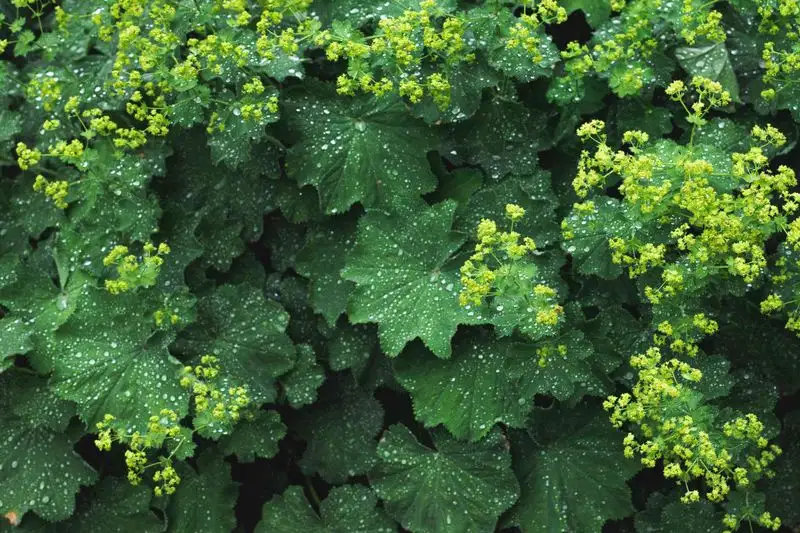
Lady’s Mantle is beloved for its soft, velvety leaves and clusters of chartreuse blooms. These features create a calming, soft texture in shaded garden areas.
This hardy perennial thrives in moist, well-drained soil and can tolerate a range of light conditions, making it versatile for various garden plans. Lady’s Mantle is often used as an edging plant or ground cover, where its dew-catching leaves can be admired up close. Its understated beauty is perfect for those seeking a tranquil garden space.
Violet
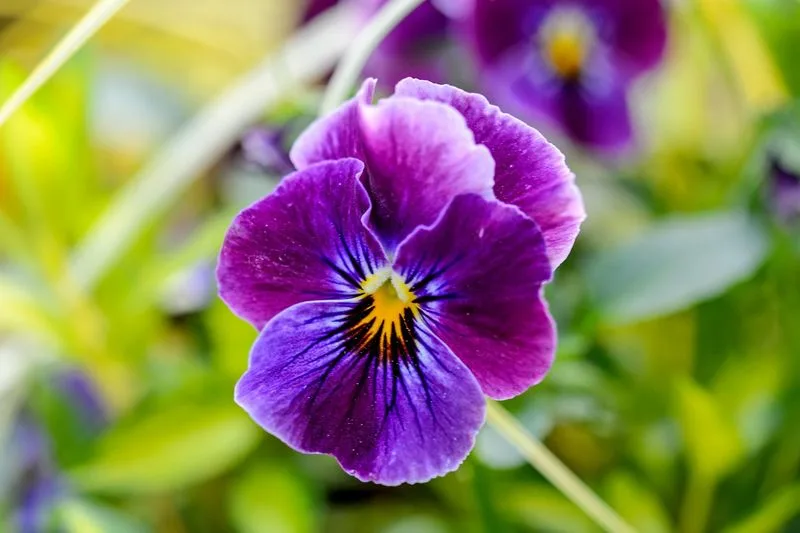
Violets, with their small and delicate flowers, add a charming touch to any shaded garden. Their purple and white blooms appear in spring, creating a carpet of color on the forest floor.
These perennials are low-growing and thrive in cool, shaded environments. Violets are perfect for naturalizing and require minimal care, making them ideal for gardeners seeking low-maintenance beauty. Their presence supports pollinators and adds a whimsical vibe to woodland settings, enchanting any garden visitor.

